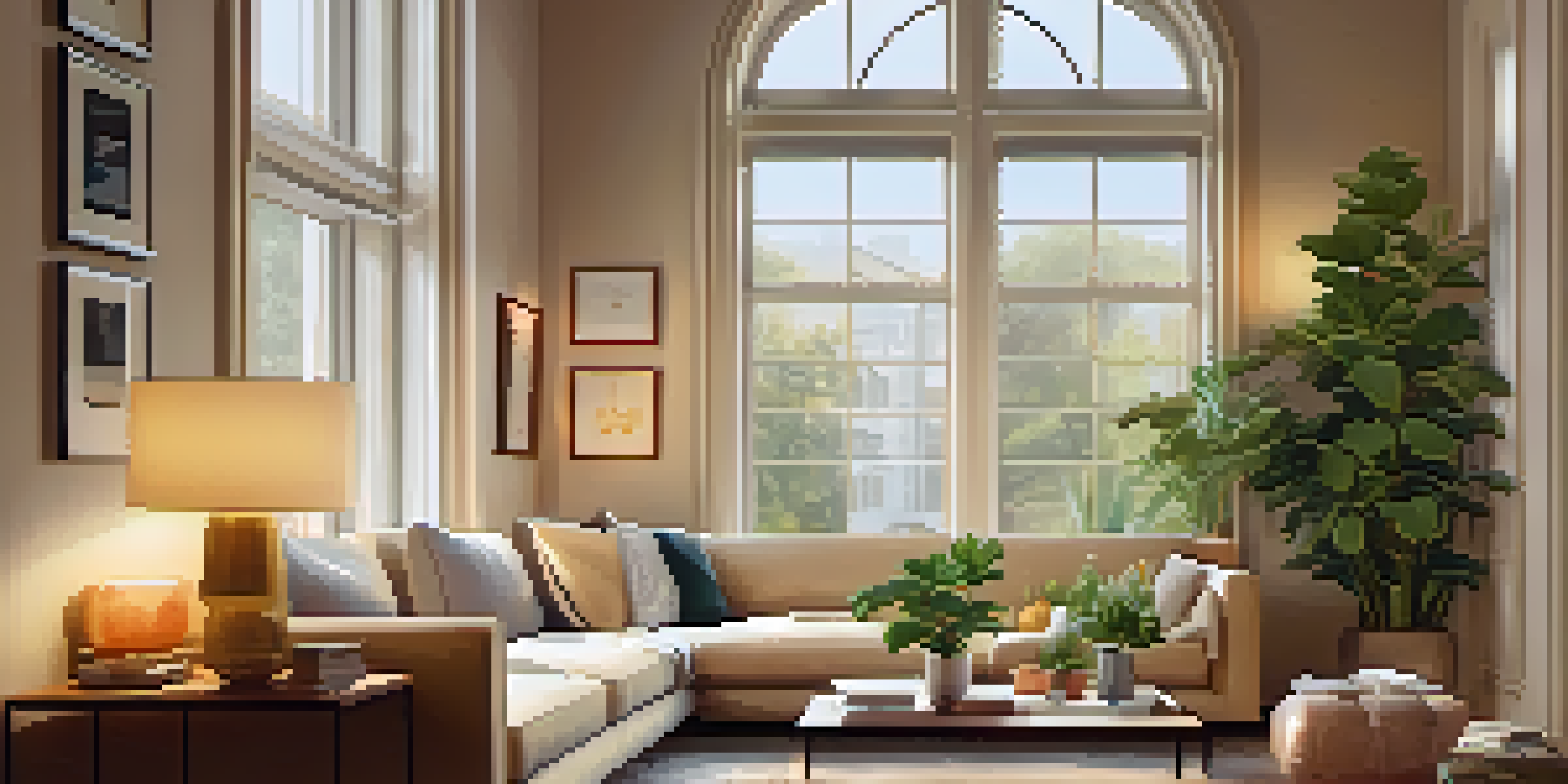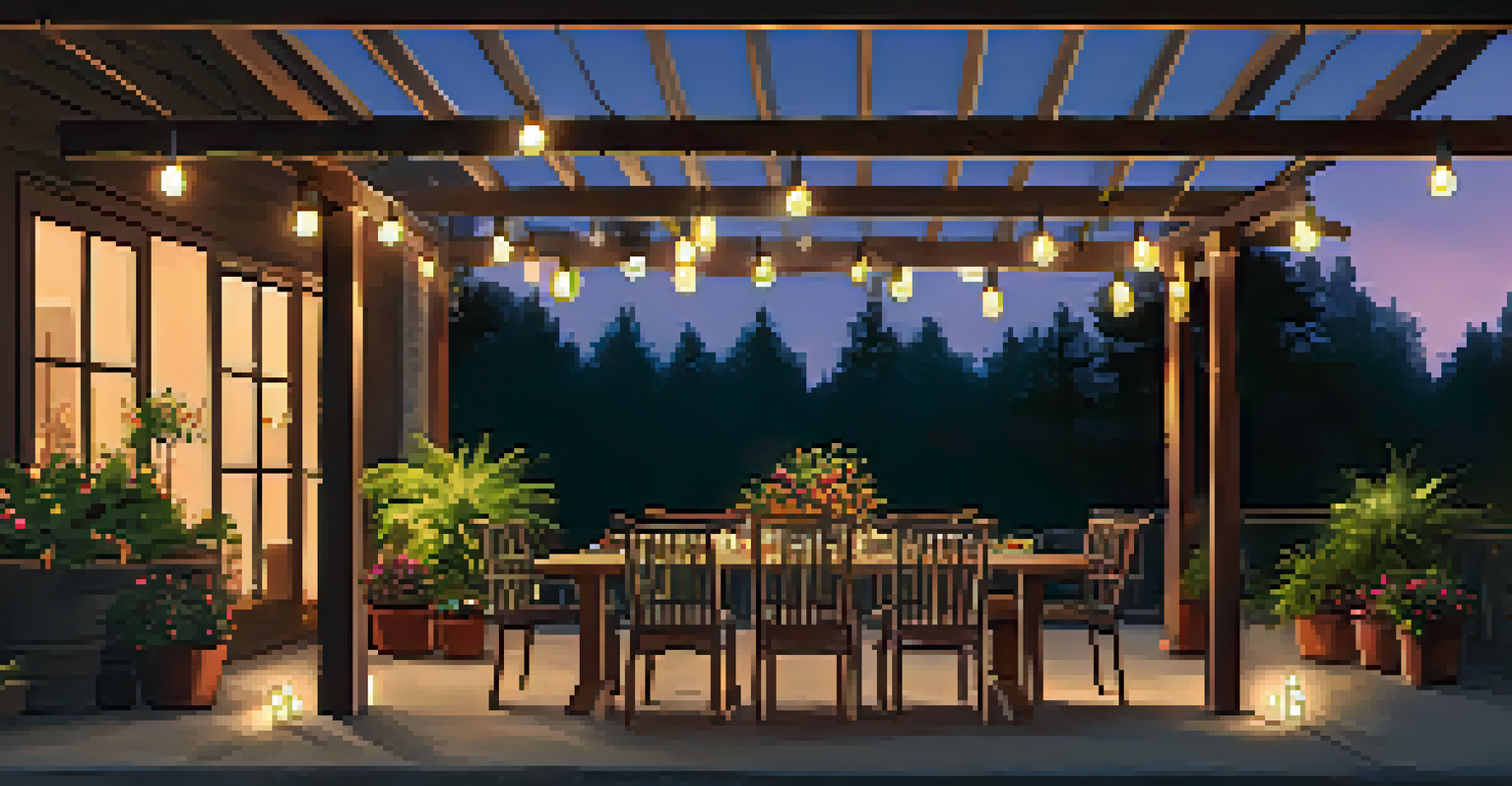Energy-Efficient Lighting: Upgrade Your Home with LEDs

Understanding Energy-Efficient Lighting and LEDs
Energy-efficient lighting refers to technologies that consume less electricity while providing the same or better illumination. LEDs, or Light Emitting Diodes, are a prime example of this technology. They have revolutionized the way we light our homes, offering not just efficiency but also longevity.
Energy efficiency is not just a policy choice; it's a personal choice that everyone can make, and it starts with stepping into your home and evaluating how you can save energy and money.
Unlike traditional incandescent bulbs, which convert a lot of energy into heat, LEDs use about 75% less energy and last up to 25 times longer. This means fewer replacements and lower electricity bills, making them a smart choice for any homeowner. By understanding the benefits of LEDs, you can make informed decisions about your lighting options.
Energy-efficient lighting isn't just about saving money; it's also about reducing your carbon footprint. Every LED bulb you use contributes to a more sustainable future, making your home not only brighter but also greener.
The Benefits of Upgrading to LED Lighting
Upgrading to LED lighting comes with a host of benefits that go beyond just energy savings. For one, LEDs emit a brighter and more vibrant light, enhancing the ambiance of any space. This can make your home feel more welcoming and comfortable, whether you're hosting friends or enjoying a quiet evening alone.

Another significant advantage is the durability of LED bulbs. They are less prone to breaking compared to traditional bulbs, which can shatter easily. This durability means less waste and fewer trips to the store, adding to the convenience of choosing LEDs for your home.
LEDs Save Energy and Money
Upgrading to LED lighting can reduce energy consumption by about 75%, leading to lower electricity bills and fewer replacements.
Moreover, LED lighting is available in a variety of colors and styles, allowing you to customize the look and feel of every room. Whether you prefer warm tones for a cozy atmosphere or cooler tones for a modern vibe, there's an LED option that suits your taste.
How to Choose the Right LED Bulbs for Your Home
Choosing the right LED bulbs can seem daunting, but it's easier than it sounds. Start by considering the brightness you need, which is measured in lumens. For example, a standard 60-watt incandescent bulb produces about 800 lumens, so look for an LED bulb that offers similar brightness.
The greatest threat to our planet is the belief that someone else will save it.
Next, think about the color temperature you prefer. LED bulbs come in different shades, from warm white (around 2700K) to cool daylight (5000K). Warm white is great for living spaces, while cooler tones work well in kitchens and work areas, helping to keep you alert and focused.
Lastly, consider the shape and size of the bulb. LEDs come in various shapes, including standard A19, flood lights, and decorative styles. Make sure to choose bulbs that fit your fixtures and match your aesthetic preferences.
Installing LED Lighting: Tips and Tricks
Installing LED lighting is a straightforward process, but there are a few tips to ensure you get the best results. First, always turn off the power before replacing any bulbs to avoid electrical shocks. This simple step can save you from potential injuries and help you work safely.
When replacing bulbs, it’s helpful to keep the old bulb handy so you can compare sizes and styles. Additionally, if you're upgrading a fixture or adding new lights, consider hiring a professional electrician to ensure proper installation and avoid any complications.
Flexible and Durable Lighting Options
LED bulbs are available in various colors and styles, enhancing the ambiance of your home while being more durable than traditional bulbs.
Don’t forget to explore dimmer switches that are compatible with LEDs. Dimming can enhance the ambiance of your home and save even more energy. Just be sure to choose dimmers specifically designed for LED use to avoid flickering or reduced lifespan.
Cost Considerations: Are LEDs Worth the Investment?
While the initial cost of LED bulbs may be higher than traditional options, the long-term savings make them a worthwhile investment. Over their lifespan, LEDs can significantly reduce your electricity bills due to their lower energy consumption. When you add up the savings on replacement bulbs and energy costs, the figures speak for themselves.
Many utility companies also offer rebates or incentives for switching to energy-efficient lighting, which can offset some of the upfront costs. Be sure to check with your local provider to see what options are available, making your transition to LEDs even more economical.
Additionally, the increased longevity of LEDs means you won’t be constantly replacing bulbs, which saves you time and hassle. In the grand scheme of things, the longevity and efficiency of LEDs make them a smart choice for budget-conscious homeowners.
Environmental Impact of Switching to LED Lighting
Switching to LED lighting has a positive impact on the environment, which is an essential consideration for many homeowners today. By using less energy, LEDs contribute to lower greenhouse gas emissions from power plants. This means your choice of lighting can help combat climate change, one bulb at a time.
Moreover, LEDs do not contain harmful substances like mercury, which is commonly found in fluorescent bulbs. This makes them safer for both your home and the environment, as they pose less risk when disposed of. Choosing LEDs is a step towards a healthier planet.
Positive Environmental Impact
Switching to LED lighting helps lower greenhouse gas emissions and reduces harmful waste, contributing to a more sustainable future.
By making the switch to energy-efficient lighting, you are not just improving your home; you are also playing a role in a broader movement toward sustainability. Every small change counts, and your decision can inspire others in your community to follow suit.
Conclusion: Embrace Energy-Efficient Lighting Today
In conclusion, upgrading to LED lighting is a smart and impactful choice for your home. With their energy efficiency, longevity, and aesthetic versatility, LEDs can transform your space while saving you money. Plus, they contribute to a greener planet, giving you peace of mind with every switch.
As you consider your options, remember the benefits of LEDs—from reducing your energy bills to enhancing your home's ambiance. Taking the step toward energy-efficient lighting will not only benefit you but also the environment.

So why wait? Embrace the change and enjoy the bright future that LED lighting offers. It’s time to light up your home in a way that’s both stylish and responsible.